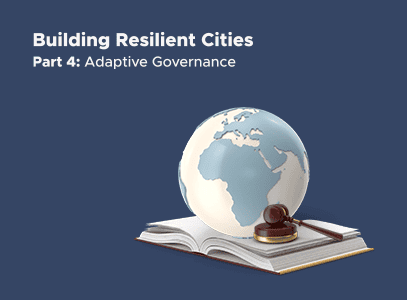You can find the original article on the Progress Forum’s website by clicking here.
Progress Studies (PS) has set out to understand the massive improvement in living standards in recent centuries and how scientific, technological, economic, and institutional factors have influenced that transformation. Naturally, the movement has focused on the places that have experienced these transformations most dramatically – today’s high-income countries.
But given the need for ever greater investment – financial and human capital – in pushing the knowledge frontier, developing countries with large and growing untapped talent pools will have an increasingly important role to play too. This is why more attention should be paid to catch-up growth in developing countries in the wider PS movement, because it has the potential to influence dynamics at the global frontier and indeed is already affecting the cutting edge of global technological progress.
Continued progress and growth in high-income countries largely requires advances at the global technological frontier, the border between what we know now and what we have yet to discover. In recent years, various researchers and commentators have argued that the rate of scientific advances at the frontier has slowed, that the number of new ideas per researcher appears to be declining substantially across a wide range of fields.[1] A variety of explanations have been proposed to explain this phenomenon. One is that the scientific and technological low-hanging fruit has already been picked[2]–which in part explains why high-income countries became high income in the first place. Another is that this may naturally be a function of how industries mature over time and new ones emerge in their place, thereby opening up new fields with yet undiscovered low-hanging fruit.[3] Still another highlights the role of misguided incentives in driving scientists to pursue incremental gains instead of risky scientific breakthroughs.[4]
One’s mileage may vary with respect to each of these explanations. A common implication of these and other hypotheses, however, is that we need to increase the number of people engaged in research – whether in pure science or applied engineering, higher-education institutions, private R&D labs, or startups. Doing so can at least partially offset declining per-researcher productivity (due to diminishing returns), and thus enable continued economic growth. A key practical challenge then is how to get more talented people mining for new ideas at the frontier.
This is where developing countries fit in. In the context of the United States, Raj Chetty and co-authors famously highlighted the phenomenon of “lost Einsteins”, about individuals who could have contributed to growth-driving innovation if they grew up in higher income households and, relatedly, had been exposed to an innovation environment as children. Their research estimates that innovation in the U.S. could quadruple if women, minorities, and children from low-income families became inventors at the same rate as men from high-income families.[5]
The natural extension of this point is to look beyond the borders of the U.S. (and other high-income countries). How many lost Einsteins are there not only across the US, but among the billions of people in Africa, Asia, and Latin America? Here the data is just as stark.[6] Youth that excel at mathematics as teenagers, as measured by International Mathematical Olympiad (IMO) scores, are especially likely to contribute to the knowledge frontier in mathematics later in life. Unfortunately, an equally talented teenager with the same IMO score born in a low-income country produces 30% fewer publications and receives 50% fewer citations than a participant from a high-income country.
As the saying goes, talent is equally distributed, but opportunity is not. A common response to this challenge in the global development community is individual-level interventions – scholarships, trainings, and fellowships. These solutions are useful, but alone they are too narrow to act at the needed scale. Their implicit objective is to find as many of the lost Einsteins in the world, one by one. But without a broader ecosystem in which lost Einsteins all over the world can emerge and thrive naturally, individual-level efforts to identify them are likely to have severe limits in terms of feasibility and cost.
This is why economic growth in developing countries is indispensable, because it provides the foundations for such an ecosystem. There are at least two channels by which it can contribute to finding Einsteins and thus frontier growth.
The first is through migration. As developing countries become richer, migration to rich countries becomes more feasible – the ability to finance education and move families increases, cultural connections thicken, and awareness grows.[7] A key example of this is the migration of high-skilled Chinese and Indian graduate students to the US over the last 50+ years.
High-skill migration not only increases the stock of people engaged in cutting edge research, but it also increases productivity in high-income countries–these immigrants are disproportionately likely to become research superstars and thus drive innovation.[8] Numerous opportunities have been identified for high-income countries to expand this form of immigration–[9] the demand side of the equation–but accelerated economic growth in developing countries can simultaneously provide a push on the supply side.
Importantly, low-skill migration also contributes to productivity in high-income countries. It can increase the availability and lower the cost of various services (e.g. care services) that in turn allow high-skilled women to join the labor force or work more hours.[10] Furthermore, by filling often manual, labor-intensive jobs, low-skilled migrants push high-skilled native workers to specialize in more complex occupations (known as “occupational upgrading”), thereby raising their productivity.[10] These effects are on top of the well-known productivity gains that migrants themselves achieve by moving.[11]
The second mechanism through which developing country growth can advance frontier growth is more direct: it increases the global stock of people who can engage in scientific research and innovation. 84% of the world’s population – 6.6 billion – lives in low- or middle-income countries (defined by the World Bank as countries with GNI per capita below $12,695). Rapid and sustained growth in these countries would enable their massive under-tapped pool of people to be more productive and hence make them more conducive environments for cutting edge R&D.[12]
Furthermore, fertility rates in many developed countries are low enough (i.e., below replacement rate) to raise concerns of population declines, which means fewer native-born people in these countries engaged in scientific research and thus discovering new ideas that drive economic growth.[13] The youth bulge in developing countries could help offset this trend–particularly in India and Africa. Globally, 1 in 5 people under the age of 25 is from India, and 47% of Indians (~650 million) are below the age of 25. Africa’s population is projected to double or triple this century (from 1.1 billion in 2020 to 2.6-3.8 billion in 2100), accounting for effectively all global population growth over that period. Finding and making good use of Einsteins in these regions may be an imperative for progress at the frontier.
Part of the reason to emphasize growth in developing countries is that the migration channel has constraints. For a variety of social and political reasons, rich countries are slow to permit immigration at sufficient, let alone the maximally productive, scale.
In addition, geographic and ethnic diversity can meaningfully increase research productivity. Although diversity appears to have mixed (and sometimes negative) effects on productivity,[14] some evidence suggests that greater diversity improves the output quality of high-skilled research teams in particular.[15] For instance, an analysis of 2.5 million scientific research papers shows more diverse teams, measured by both ethnic identity and author addresses, are associated with more citations and publication in higher impact journals.[16] A more recent analysis finds that: 1) co-author groups above the 90th percentile in ethnic diversity see a 10.6% increase in the impact of their papers; and 2) individual scientists with a set of collaborators above the 90th percentile in ethnic diversity see a 47.7% increase in their own impact.[17]
While not definitive, enabling more researchers from around the world to engage at the global scientific frontier may increase the probability of breakthrough innovations per unit of effort. Historically, the global seats of innovation shift over time. In the modern era, we can trace the history of elite universities from Germany to the United Kingdom, and up to today in the American northeast and Bay Area.[18] Just as the seeds for these transitions were planted well before the transitions themselves occurred, the seeds for a future transition towards the Global South are being planted. The African School of Economics (partnered with Princeton University), Kigali Innovation City (partnered with Carnegie Mellon University), the Indian Institutes of Technology (IITs), and other institutions like these can nurture the development of new innovation ecosystems capable of contributing to frontier innovation.
Among the PS community, high-skilled migration–the first channel described above–is already receiving substantial attention. The Institute for Progress, for example, has identified high-skilled migration as one of its four focal areas for research and advocacy.[19] In comparison, growth in developing countries is neglected by the PS community.
The world’s inability to make full use of its human talent, apart from moving a lucky few to the already highly productive places, remains a massive missed opportunity. The failure to make more places around the world more productive, thus better utilizing our vast pool of human potential, is a loss to all of us wherever we live.
This mechanism is more than theory. China and India offer concrete examples. In fact, they demonstrate that catch-up growth in developing countries can quickly turn into frontier progress itself. Countries don’t need to catch up all the way in income terms to meaningfully contribute to the technological frontier. At per capita income levels still far below developed countries, China (1/5th the US GDP per capita in 2021) and India (1/30th the US GDP per capita in 2021) are both contributing to global innovation in substantial ways.
Many observers believe that China has emerged as a global leader, or at minimum is challenging US leadership, in various strategic technologies. The Strategic Competitive Studies Project finds that technologies such as AI and advanced manufacturing are currently contested between the US and China, and that China is potentially leading in areas like batteries and drones. China filed 2.5 times more patents in AI technologies than the US in 2018, and 75% of the global total over the past decade.[20] While patents are imperfect innovation metrics, the mere existence of the conversation on US-China technology competition suggests that China is already within striking distance of the frontier.
Similarly, India is a growing contributor to global technologies. One well-known illustration is that the Indian space agency, ISRO, successfully sent a probe to Mars in 18 months at roughly 1/10th the budget of NASA’s comparable mission.[21] Most past Mars missions have failed but India succeeded on its first attempt. Again, one might quibble with the differences between the probe capabilities and mission objectives, but the fact of carrying out a successful Mars mission at low cost is itself a sign of technological potential.
The rise of China and India as key players in the global innovation ecosystem forces us to recognize economic growth and material progress as crucial prerequisites for advancing the technological frontier. Absent sweeping economic transformation, which between 1980 and today has lifted over 800 million people out of extreme poverty, China would be contributing little, if anything at all, to global innovation.[22] The vast majority of lower-income countries currently lack the social, educational, financial, and other networks, like those seen in Silicon Valley or historically with the Royal Society of Arts, necessary to build an innovation ecosystem capable of contributing to frontier technological progress.[23] Despite the blossoming start-up scenes in some of these places, such as Nairobi and Lagos, talented individuals can do little to contribute to major scientific breakthroughs or to manufacture advanced products locally without sustained economic growth in their countries.
Thus far, economic growth in developing countries is one of the few issues that spans the goals of long-termism and short-termism. In the short to medium term, it will increase the prosperity and well-being of millions of poor people around the world. Over the long term – and sometimes sooner than we expect – it will influence the dynamics of frontier growth, with huge effects for developing and developed countries alike.
For this reason, we believe those who seek to understand and promote human progress should pay more attention to economic growth in developing countries.
To access the cited sources, kindly visit the original article on the Progress Forum website.
Kartik Akileswaran and Jonathan Mazumdar are co-founders of Growth Teams.
Jeffrey Mason is a research manager at the Charter Cities Institute.







